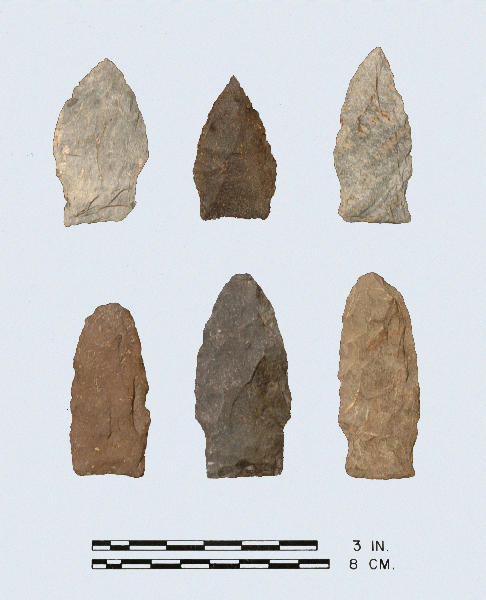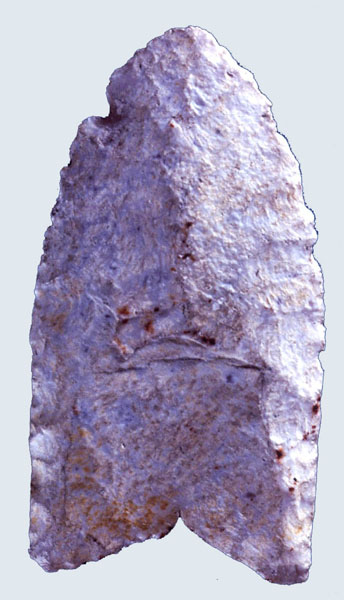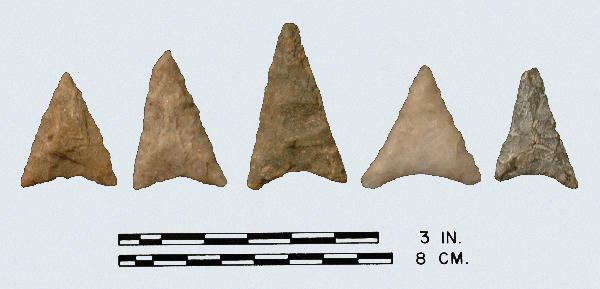
Fox Creek: Top Row: rhyolite, silicified mudstone, rhyolite; Bottom Row: silicified mudstone, rhyolite, silicified mudstone.
Type Middle Woodland
Defining Attributes
The Fox Creek point has a broad, lanceolate blade with either weak shoulders and a square stem or no stem, and a concave base. The two variants of the Fox Creek type are termed ‘lanceolate’ and ‘stemmed.’
Chronology
The Fox Creek point dates to the Middle Woodland period, 200 to 700 CE. Ritchie (1971) gives dates for the Fox Creek type based on points found in association with Middle Woodland ceramics from two New York sites. Hearth charcoal from the Fredenburg site (Ostego County) was radiocarbon dated at 360 +/- 100 CE. The Westheimer site (near the junction of Fox Creek and Schoharie Creek) was radiocarbon dated at 450 +/- 80 and 410 +/- 80 CE.
Description
- Blade: The Fox Creek lanceolate type has a lanceolate blade with excurvate or slightly recurvate edges. The stemmed type has an ovate, lanceolate or rarely trianguloid blade with excurvate edges.
- Base: On both variants of the Fox Creek type, the base is usually mildly to moderately constricted and slightly concave. The stemmed type has a wide stem, with very small, right angular or sloping shoulders. In many cases the shoulders are so weakly developed that they are almost non-existent, thus the stemmed type blends into the lanceolate type. Occasionally the base is thinned.
- Size: Length ranges from 25 to 89 mm. Width ranges from 24 to 40 mm. Thickness ranges from 6 to 11 mm.
- Technique of manufacture:
Discussion
There has been a considerable amount of confusion surrounding the Fox Creek type. A similar type, the Steubenville, was first introduced by Mayer-Oakes from the upper Ohio Valley. Here, Steubenville points were recovered from non-ceramic sites dating to the Archaic period. Ritchie in 1961 discusses the Steubenville type as it is found in eastern and southern New York. However, in his 1971 revised edition he notes that these points should be called Fox Creek. Fox Creek points, in contrast to Steubenville points, have been found in association with ceramics which date to the Middle Woodland period. Ritchie notes that despite general resemblances in morphology, Steubenville points of the upper Ohio Valley had a history separate from that of the Fox Creek points, which have ceramic associations. Fox Creek points are often found made from rhyolite in the Coastal Plain of Virginia. This suggests that the points were mass produced at the quarry and traded. In Maryland the Selby Bay point is similar in shape and context (Wright 1973).
Defined in Literature
This type was originally defined by Ritchie (1961 revised 1971) based on points recovered from southern and eastern New York.
References




